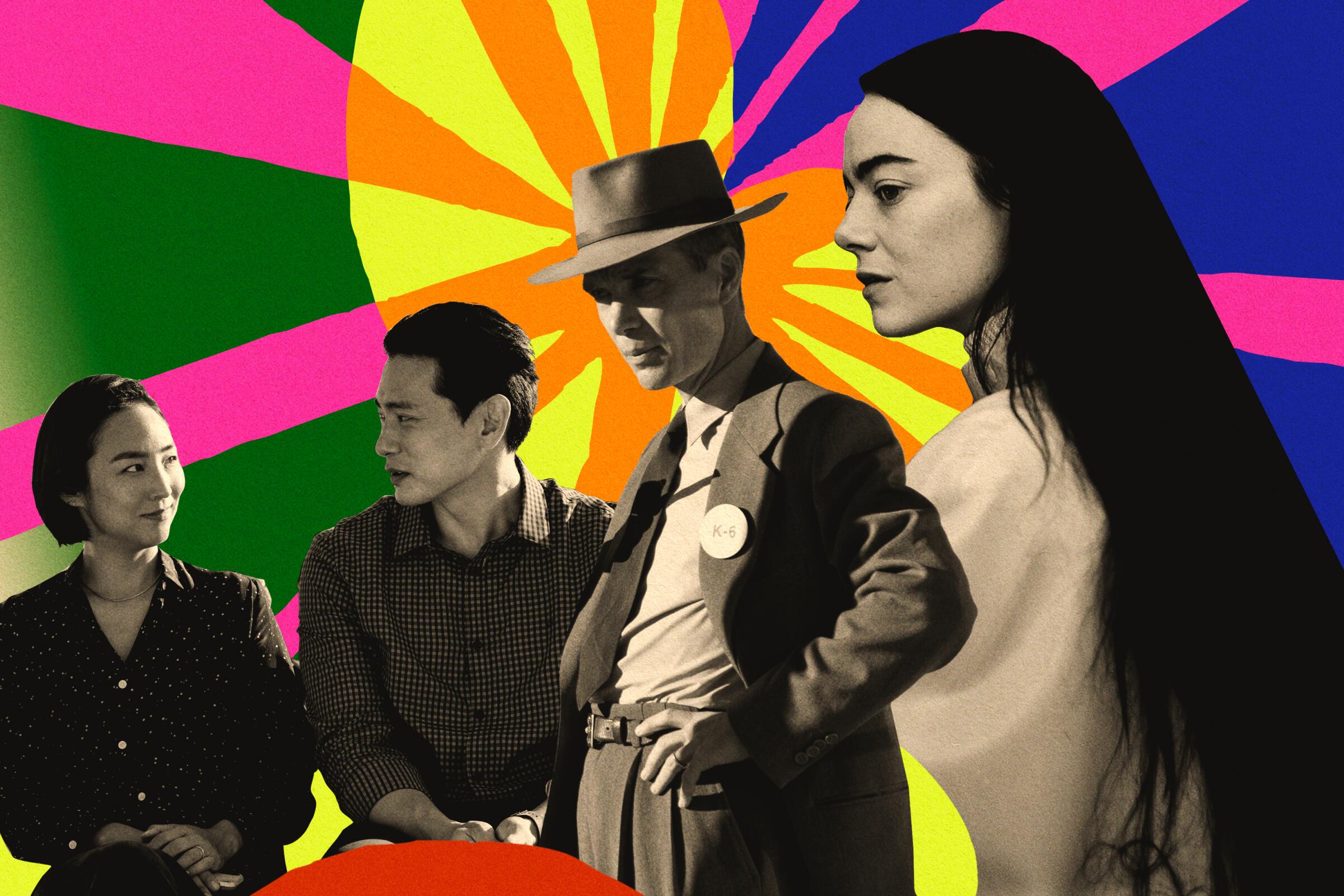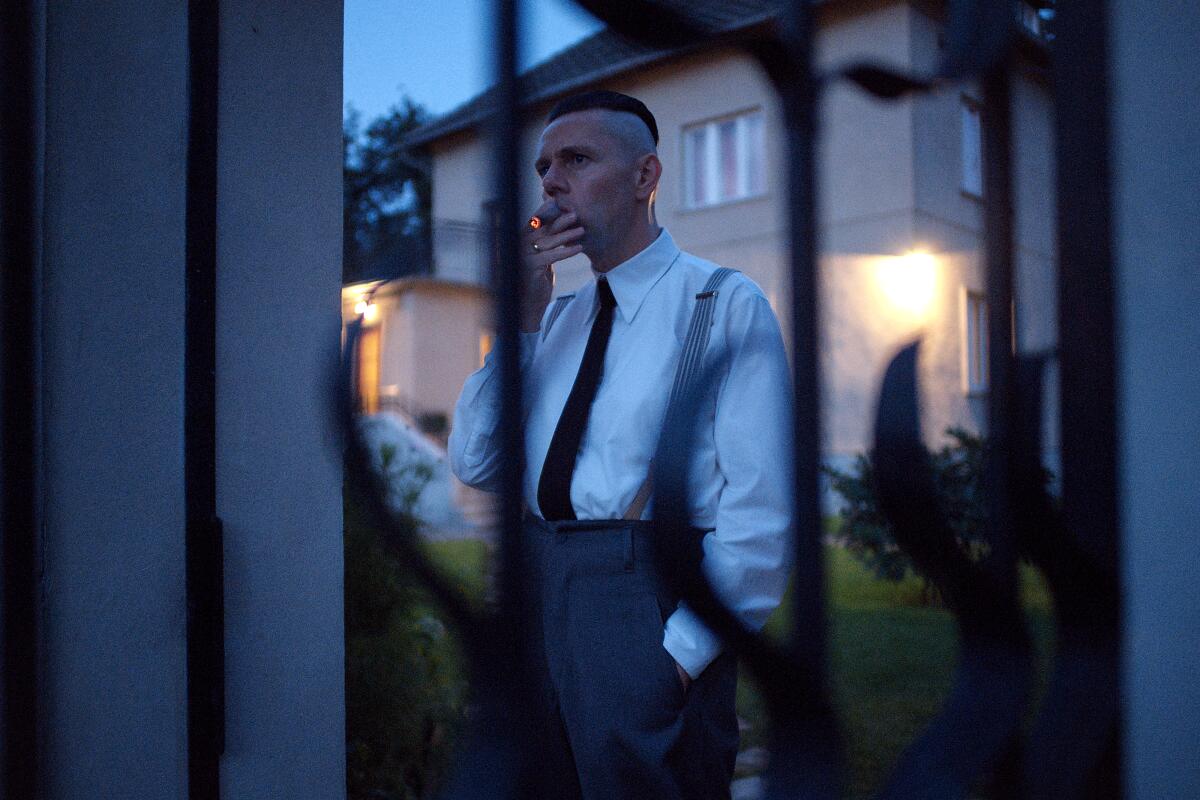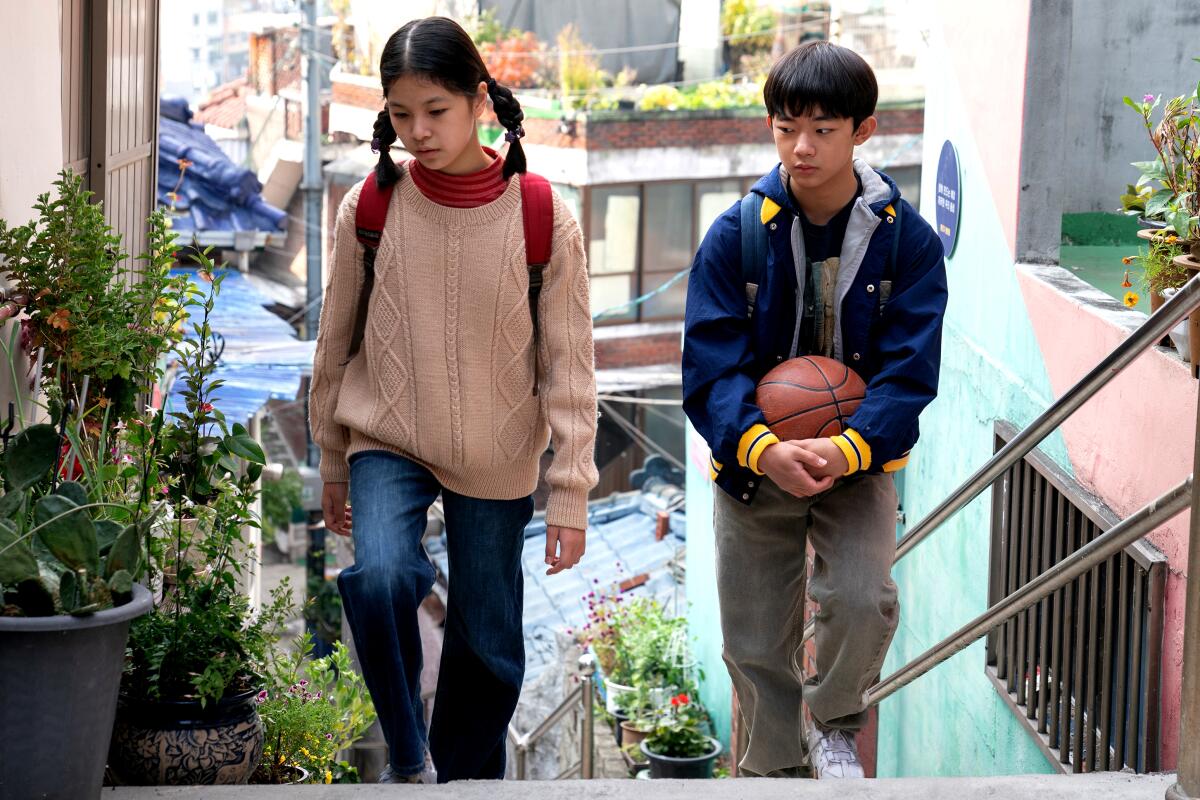Only good movies
Get the Indie Focus newsletter, Mark Olsen's weekly guide to the world of cinema.
You may occasionally receive promotional content from the Los Angeles Times.

There’s nothing like watching a movie with an audience — and, as I realized a few months ago, there’s nothing like watching an audience watch a movie.
It was in October during the 61st New York Film Festival, and as one of the event’s part-time programmers, I found myself backstage at Lincoln Center’s Alice Tully Hall during a screening of Yorgos Lanthimos’ “Poor Things.” I’d seen it twice already and liked it enough to linger for about 45 minutes in the wings, surveying a giant video feed of the packed auditorium that reduced the big screen itself to postage-stamp proportions.
Our critics and reporters select their favorite TV shows, movies, albums, songs, books, theater, art shows and video games of the year.
It was far from an ideal way to actually watch the movie, or indeed any movie: The images looked stiff and remote; the dialogue and music echoed unnaturally; and the audience laughter, while explosive, felt oddly muffled and distant. But it was a fascinating experience too, enveloping in its own way even as it was alienating. Here was my first time seeing “Poor Things” with a crowd, and I still felt like I wasn’t really seeing it with a crowd.
In the months since, that disconnect has been playing in my head on a loop, and it’s come to feel like a metaphor for my own distance from the readers I write for — a distance I try my best to close with every review, every essay and, yes, every list like this one. It isn’t always easy. One of the necessary privileges of being a critic is the opportunity to see new movies early, sometimes a week or two before they’re released (in the case of most studio pictures), and sometimes months in advance at film festivals. This year, my NYFF duties meant seeing more than a few major movies in unfinished form, which made them all the more intriguing to revisit later, with fresh eyes, when the time came to actually write about them.
Television critics Lorraine Ali and Robert Lloyd weigh in on the series they enjoyed most in 2023, including ‘Poker Face,’ ‘Reservation Dogs,’ ‘Mrs. Davis,’ ‘I’m a Virgo’ and more.
That’s how I came to watch Andrew Haigh’s “All of Us Strangers,” for me the best movie of 2023, first in an empty screening room with only a tight-lipped Searchlight-hired security guard present. It’s a film so breathtaking in its impact, it actually hurt not to be able to talk about it for another few months. On a completely different note, I saw Jonathan Glazer’s “The Zone of Interest” at a morning press screening at Cannes and couldn’t get its images out of my mind or its sounds out of my ears. I saw it again the next day, less in the spirit of a rewatch than of an exorcism. I’ve had months since to process its horrors; for many of you, those months still lie ahead, and I hope it’s a challenge you’ll embrace.
And so as I prepare to tell you about all the other movies I liked and loved this year, it’s not lost on me that many of them still have yet to open, let alone be widely seen. I’ve watched each of my 10 favorite movies of 2023 more than once, and some of them have already achieved the permanence of old friends, even before they’ve had the chance to really seep into the cultural ether. Here they are, arranged as a series of themed pairings — in fitting tribute to “Barbenheimer,” though only one-half of that celebrated mashup made the cut:


“All of Us Strangers”; “The Boy and the Heron” (Parisa Taghizadeh / Searchlight Pictures; GKIDS)
An unusual pairing, to be sure, but one that for me makes a sad and sublime kind of sense. In Andrew Haigh’s metaphysical heartbreaker “All of Us Strangers,” a lonely screenwriter (Andrew Scott, giving the performance of the year) falls for a handsome neighbor and reunites with his long-dead parents. In “The Boy and the Heron,” likely the final animated marvel from the 82-year-old Hayao Miyazaki (though we can hope otherwise), a boy ventures into a fantastical realm and reckons with his mother’s recent death. In both movies, painful memories become wondrous hallucinations, a tower becomes a portal between worlds, and questions of reality versus fantasy, or old versus young, blur into insignificance. Miyazaki asks us how we live; Haigh, with no less urgency, asks us how we love.
(“All of Us Strangers” opens Dec. 22 in theaters. “The Boy and the Heron” is now playing in theaters.)


“The Zone of Interest”; “Oppenheimer” (A24; Melinda Sue Gordon / Universal Pictures)
Two British filmmakers with a fearless command of the medium ventured into the well-trod territory of World War II from chillingly oblique angles, raising tough new questions about culpability, deniability and cinematic representations of violence. How much to show? How much to imply? It’s a question that Jonathan Glazer ponders in “The Zone of Interest,” his extraordinary, pared-to-the-bone drama set in the damning shadow of Auschwitz, and one that Christopher Nolan answers with his own rigor in “Oppenheimer,” his momentous film about the creation of the atomic bomb. In each story, a machinery of mass death is ruthlessly implemented, and a man realizes, with a blank stare into the void, the crucial role he has played in its devising.
(“The Zone of Interest” opens Dec. 15 in theaters. “Oppenheimer” is available on multiple platforms.)
Three contributing critics pick their best fiction of the year, including work by Victor LaValle, Ed Park, Lauren Groff, Yiyun Li and Tania James.


“Showing Up”; “Afire” (Allyson Riggs / A24; Sideshow / Janus Films)
Sometimes you just want everyone to go away and leave you alone so you can finish that damn magnum opus, which is no small task when your more popular and acclaimed friends are constantly overshadowing you. The tetchiness of the creative temperament is on grand, empathetic display in “Showing Up,” Kelly Reichardt’s exquisitely observed art-world comedy, and “Afire,” Christian Petzold’s tense, biting tale of a working holiday gone awry. Both feature expert, vanity-free performances — from Michelle Williams and Thomas Schubert, respectively — playing such memorably self-serious grumps that you almost want to see them co-star in a crossover rom-com sequel.
(“Showing Up” and “Afire” are available on multiple platforms.)


“Past Lives”; “The Eight Mountains” (Jin Young Kim / A24 Films; Cannes Film Festival)
A prematurely uprooted childhood friendship reverberates across years of absence, only to be rekindled with joy, regret and a sense of irreversible loss. The beauty of Celine Song’s emotionally intimate, philosophically expansive “Past Lives,” played with breathtaking understatement by Greta Lee and Teo Yoo, lies in the way romantic desire flickers but never fully ignites, leaving you to imagine what might have been. Meanwhile, the soul of “The Eight Mountains,” Felix van Groeningen and Charlotte Vandermeersch’s glorious male weepie, is in Alessandro Borghi and Luca Marinelli’s performances as boyhood peak pals, brought together by cliffs and ultimately separated by chasms.
(“Past Lives” and “The Eight Mountains” are available on multiple platforms.)


“De Humani Corporis Fabrica”; “Poor Things” (Grasshopper Film / Gratitude Films; Atsushi Nishijima / Searchlight Pictures)
No movies wielded a scalpel as fiercely or inventively as these two, though to wildly different ends. Lucien Castaing-Taylor and Véréna Paravel, veteran nonfiction avant-gardists (“Leviathan,” “Caniba”), took us on a truly fantastic voyage in “De Humani Corporis Fabrica,” their tour de force of eye-piercing, prostate-removing endoscopic horror. Greek filmmaker Yorgos Lanthimos, transplanting human and animal parts in all manner of twisted cross-species configurations, turned Alasdair Gray’s novel “Poor Things” into a riotous odyssey through body and soul, as well as an astonishing showcase for Emma Stone at her most deliriously protean.
(“De Humani Corporis Fabrica” is available on Mubi and other platforms. “Poor Things” opens today in theaters.)
Boygenius! Peso Pluma!! Lily-Rose Depp!!! Here are our picks for the 100 best songs of 2023.
And here are 14 honorable mentions. Excessive? Not in a year this good:
“About Dry Grasses” and “Godland”
Two of the year’s most visually and intellectually immersive films, each pitting one very small man against a vast, sprawling landscape.
“All Dirt Roads Taste of Salt” and “Earth Mama”
A highly intelligent way with the camera and a deep, intuitive understanding of Black motherhood and childhood distinguished both of these sterling debut features.
“Anatomy of a Fall” and “A Thousand and One”
Two of the year’s big festival winners (“Anatomy” director Justine Triet took the Palme d’Or at Cannes, while A.V. Rockwell received the grand jury prize at Sundance for “A Thousand and One”) pivot on the same knotty and quiet understanding between a mother and a son — and in the process, push conventional storytelling forms toward their own subversive ends.
“Are You There God? It’s Me, Margaret” and “Tótem”
A young girl’s coming-of-age and her family’s joy and heartache are perfectly observed in both Kelly Fremon Craig’s underappreciated Judy Blume adaptation and Lila Avilés’ haunting work of poetic realism.
“Maestro” and “May December”
Two formally ingenious, finely acted marriage stories from Netflix, each about the deceptions and concessions that lie at the heart of every long-term relationship.
“Menus-Plaisirs — Les Troisgros” and “Our Body”
An unfailingly observant eye distinguishes both Frederick Wiseman’s loving look at the Troisgros culinary empire and Claire Simon’s searing panorama of the struggle for women’s healthcare.
“Pacifiction” and “R.M.N.”
Two hypnotically absorbing, cryptically titled, insidiously damning panoramas of life in, respectively, the sun-drenched island of Tahiti and a snow-bound Transylvanian village, neither of which you’ll be in a hurry to visit afterward.
Only good movies
Get the Indie Focus newsletter, Mark Olsen's weekly guide to the world of cinema.
You may occasionally receive promotional content from the Los Angeles Times.